Flipping Houses: How To Flip A House Profitably
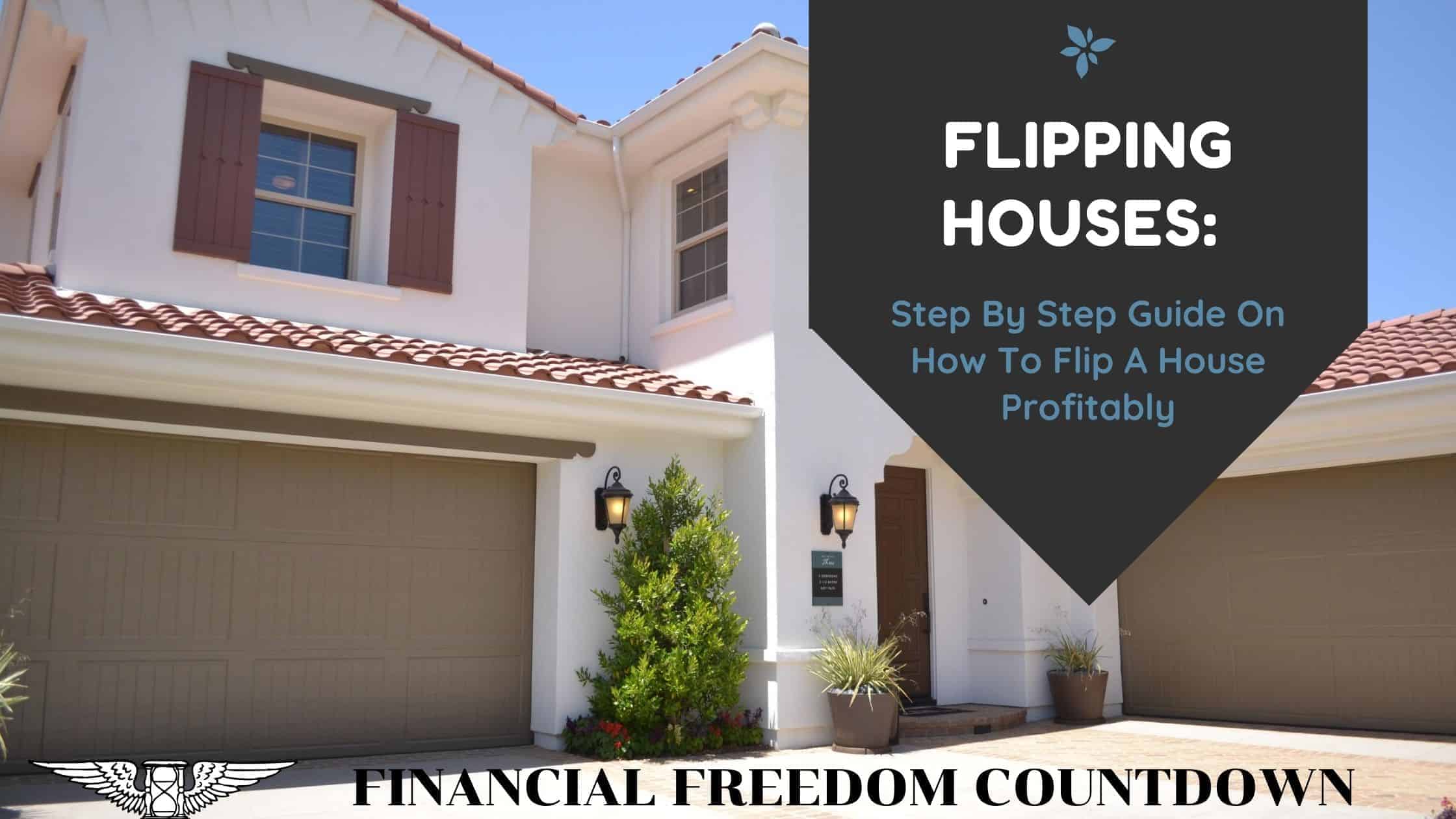
Last weekend, I caught up with my friend Stephen working at Facebook. Over drinks and dinner; he shared the stress he is undergoing at work. He wants to add flipping houses as an extra income stream. After all, more income streams can help you accumulate income-producing assets to get insanely rich. The challenge with flipping houses is to know how to flip a house profitably.
Even if you are not interested in flipping houses, this article will help you snag a great deal in your local market. Either as a primary home or as a rental property investment.
You will also understand how to make hard money loans to a flipper or analyze deals on a Crowd funded real estate platform. Avoid making the mistakes I did; losing 45% of my investment.
If you are worried, will robots take my job, flipping houses might be safe for a few years. After all, flipping does rely on a lot of soft skills.
Flipping Houses v/s Buy and Hold v/s Live-in Flip v/s BRRRR
Flipping houses can be done in various forms so let us take a look at some of the most common methods.
Flipping houses involve buying a house, fixing it up and selling for a profit.
Buy and Hold involves buying a house to rent it. The rental term can either be a short term like Airbnb or a long term lease. This is a more common form of real estate investing.
Live-In Flip is where you rehab a house but instead of immediately selling it; you live in it and then sell it. This method is advantageous from a tax perspective. Owners are exempted from paying capital gains taxes on the sale (up to $250,000 for an individual and $500,000 for a couple); as long as they have lived at the property for at least 2 out of the previous 5 years.
BRRRR is a combination of the flipping and buy and hold methods. The acronym stands for Buy-Rehab-Rent-Refinance-Repeat. In this method, one would buy a house and rehab it like flipping houses. But instead of selling it after the rehab, the owner would rent it out. The rental income is then used to refinance the loan. This involves obtaining a bank mortgage and repaying the hard money loan. This process can be repeated for the next house using the money from the prior houses.
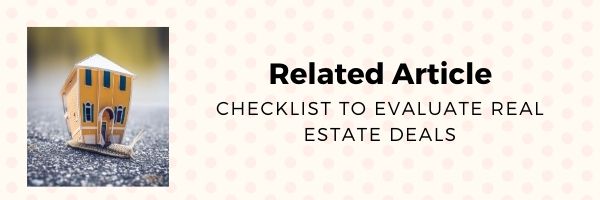
How To Flip A House: A Step By Step Guide
Define Your Area And Neighborhood
Research what kind of neighborhood you want to target. This will determine your price range, potential target buyers and also the level of rehab which would be needed. Class A neighborhood would require stainless steel appliances and granite counter tops in the kitchen v/s Class C.
Also you should have an approximate idea for long long properties stay on the market and what is the best season to complete the rehab. The After-Repair-Value (ARV) should be consistent with the neighborhood or it will be hard to sell.
Find The Property To Fix and Flip
Usually the properties which are great candidates for flipping will not be listed by real estate agents on Multiple Listing Services (MLS). There are several other ways successful house flippers find property
- Marketing: You would send mailers regularly to certain individuals looking to sell the property. Your mailing list could include out of state landlords, recent divorcees, individuals delinquent on their property taxes, etc.
- Distressed Houses: If you notice houses not well maintained, unkempt lawn, etc; they could be good candidates for a house flip. These are great signs to look when driving or walking around your neighborhood. The technique is known as “driving for dollars”. You could find a property on the verge of foreclosure and make it a win-win deal for everyone.
- Auctions: Cities generally auction houses with liens on them.
- Wholesalers: Develop a network with wholesalers who scout properties and are ready to assign the contract to you for a fee. Wholesaling enables you to get a steady stream of off-market properties.
Determine The Rehab Budget
- Rehab costs: This is the cost to actually fix up the property. J Scott in his book on Estimating Rehab Costs provides a great template to capture all details. Make sure you do not forget any permit and associated fees. If you have ever done a simple home remodel project, you would know that costs increase fairly rapidly.
- Project duration: Since you are paying interest on the loan for flipping houses; you need to manage not only the rehab budget but also the schedule. Any schedule overrun will cost you money in the form of additional interest rate. Also the longer you take to complete the rehab, the greater the chances of the market cycle turning against you. It would be very hard to sell when the prices start dropping. Include the time needed to get the necessary permits and inspections.
- Interest cost: Based on the amount of your loan, the rate and the project duration determine the holding cost in the form of interest on the loan. The holding cost also known as carrying cost need to be negotiated not only for the rate; but also for the duration with the lender. Can the loan be extended at a favorable rate if the project runs into issues. Do you have a balloon payment on the due date?
No money down deals are great if you partner with someone who provides the funds. But as a flipper; you still need to manage the rehab on behalf of your real estate investor.
Platforms such as Groundfloor Lending permit real estate investors to borrow funds for their fix-and-flip projects. Create a borrower account today to learn more about becoming a borrower.
Determine The Buy Price
To flip a house profitably; you need to run the numbers accurately. Do not fall in love with a property and then adjust your assumptions to make it look profitable on paper. Your assumptions should be never too optimistic.
Money is always made on the buying price. Never overpay for a deal!
For a house flip, find the comps for a fixed up house and work backwards to calculate the buy price. Don’t forget to include the Rehab cost and the hard money interest cost in addition to the profit.
Make sure you use the 70% Rule of thumb for house flipping listed below.
Ideally your buy price should be ARV – Rehab costs – Finance costs – Closing costs – Expected Profit
Obtain Financing
With a Buy and Hold rental, you can typically get bank mortgages at low rates. Properties which are prime candidates for flipping, are generally not habitable. There is a certain amount of rehab work which needs to be performed to get the house habitable and to code.
Since banks do not lend on such properties; you will need to get external financing.
- Hard Money Loans: These loans are made by individuals and are very expensive. Also it is hard to obtain financing for large deals since an individual may not be comfortable loaning a large sum on one particular deal. And you have to rely on your network to obtain these loans. So if you do not have a wide network of hard money lenders or if you are a new flipper; it would be hard to get the financing.
- Crowd Funded Platforms: The Jumpstart Our Business Startups (JOBS) Act created an exemption so that crowdfunding can be used to obtain funding from the general public. You can use one of the real estate syndication websites to obtain financing at lower rates. Also since the deal is crowdfunded; larger sums can be obtained since several investors would pool the money.
- Family and Friends: Flippers sometimes reach out to family and friends for Private Money loans. I would not recommend this route since it would make for a very awkward Holiday Dinners if your deal goes bad. Also, one of the advantages of seeking funding via hard money or crowd funded platforms is that; the investors analyze the deal with you. If they are not lending; it means you have a bad deal and it is better to walk away. Better to not lose money and time over the deal. Family and friends generally would not have knowledge to vet the deal. No second pair of eyes to validate your deal is the biggest drawback.
Determine The Exit strategy
Before deciding to undertake a flip; make sure you have at least two or three exit plans in place. You might have started the flip in a great market cycle; but by the time you complete it; it could be a recessionary market after 9 months. If you can’t flip it, do the numbers work out for a long term rental or AirBnB? Can you hold on the property or would you need to distress sell it like many did in the aftermath of the Great Financial Crisis.
Manage The Rehab
Make sure there are no cost over runs on the project. Also due to the interest on the loan; ensure your contractor sticks to the schedule. Ideally, you should build a milestone based payment in your agreement with the contractor. Add bonus incentives for completing certain milestones ahead of schedule..
Be Aware Of Real Estate Trends
Given that fix and flip projects take more than 6 to 9 months to complete, assume the property market may change. Keep a close watch on national real estate trends to make sure you are not in a downturn by the time you are done with the rehab and want to sell.
Don’t forget local trends. Figure out how your property value changes if the city proposes a homeless shelter near your flip or a swanky mall. How would either impact the sale price?
Considering everything, be very conservative when actually buying the property. You might not be able to sell at your estimated price if market conditions at the time of sale are different from when you bought the property.
Ninety percent of all millionaires became so through owning real estate.
Andrew Carnegie

What Is The 70% Rule In House Flipping?
The 70% rule is a way to help house flippers determine the maximum price to pay for a fix-and-flip property in order to turn a profit.
The 70% rule states that a fix-and-flip investor should pay 70% of the After Repair Value (ARV) of a property, minus the cost of repairs and improvements.
The 70% rule of house flipping is a rule of thumb. It is used to quickly sort out properties which merit a second look. You still need to run detailed analysis before you buy.
Assume a house if worth $200,000 after it is fully repaired. This is the ARV.
Consider $40,000 as the repair budget.
70% of $200,000 is $140,000. When you subtract the rehab cost; you get $100,000.
Based on the 70% rule for flipping houses, an investor should not pay more than $100,000 when buying the house.
Is House Flipping Still Profitable? Analysis Of A House Flip
Since the best place for technology Jobs is still San Francisco Bay Area, can you flip a house here profitably? Given the buoyant real estate market in the San Francisco Bay Area; a number of real estate investors have started “advertising” their courses. Many seminars are popping up where they sell dreams of how easy it is to buy a fixer-upper and flip for a tidy profit.
One of my favorite hobbies is to visit open houses over the weekend and analyze local properties available for sale. Since I own a primary residence and also a rental in the San Francisco Bay area; a significant portion of my net worth is tied to the the local property market.
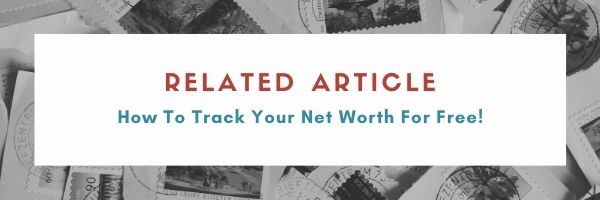
Analysis of the local property market also helps me figure out if it is an opportune time to buy another rental and what are the current trends. My plan with the Cash out refinance is to purchase another rental.
Today we will analyze a property which does not seem to be making a decent profit.
Disclaimer: I do not know any details or history of this particular house. Since I have seen it pop in and out of the MLS several times, I can only assume it was bought as as fix and flip. I also do not know the original condition or the amount of repairs needed. This is purely a hypothetical study with lots of assumptions. It is not a reflection in any manner on the property, the listing price, the amount of rehab work needed, the seller, the agent, the contractor or anyone involved directly or indirectly with the property.
This is a 3/2 home located in the Bernal Heights neighborhood of San Francisco. This property was purchased in 2017 for $1.15M
Can you guess what it sold for after renovations?
I am not sure of the actual condition of the property before the flip and how much renovation was needed to be carried out. But for purposes of this example, assume a conservative rehab budget of $350,000. The number is conservative considering what is involved in the Permit and Planning approval process.
I assume the flipper would have needed to do some foundation work given the new earthquake guidelines. Once you obtain a permit to rehab, the property must be brought to compliance with the current guidelines.
The planning and permit process in San Francisco is worse than the California DMV by a factor of 100. The San Francisco Homeowners Planning process is quite lengthy. Besides architectural and safety related issues, you also undergo neighborhood and environmental review.
During the planning process; anyone can suddenly deem your house a historic artifact. Tales similar to the “historic” Laundromat are more common than you think.
Also, all applications for new construction or additions to existing buildings with a roof height above 40 feet must undergo Shadow Analysis. Public hearings will be conducted to determine if the project has potential to cast a shadow. I am sure you now understand how long drawn out the entire permit and planning process in San Francisco can be.
Surprisingly the flipper managed to complete the rehab work and list the property in 9 months. This is commendable given the challenges I mentioned with the permit and inspection process!
Usually hard money loans are offered by private parties at 12% to 15% rate with points added as well. Let us assume our flipper was lucky and obtained a hard money loan on a crowd funded platform from a sucker like me. Remember I did lose money when I lent to a fix and flip project. The interest cost on crowd funded platforms is typically around 10% with no points.
Assume the loan was for 90% of the purchase price and 100% of the Rehab budget. The interest cost after 3 years at 10% rate; is already $415,500 for the property.
| Buy Price | $1,150,000 |
| Loan amount on 90% Buy Price | $1,035,000 |
| Loan amount of Rehab Budget | $350,000 |
| Interest Rate | 10% |
| Total interest cost after 3 years | $415,5000 |
| Minimum Sell Price with Zero profit (Buy price + Rehab + Interest cost) | $1,915,500 |
In order to break even after 3 years of sweat and anguish, the property needs to be sold at least for $1,915,500 considering ZERO profit.
The listing agent has been frequently changing prices. And delisting and relisting the property. The listing price over the 3 years has changed from a low of $1.35M to a high of $1.79M.
If a property is not sold for 2-3 months; people usually skip it. Having been on the market for 28 months definitely would not attract top dollar. Considering it took 9 months for the rehab to be completed and was first listed in 2018; it has still been on the market for longer than average.
Unfortunately, 3 years after the property was purchased; it is still unsold. In fact, the listing price/sq ft is lower than the purchase price.
5 Mistakes That Can Ruin House Flipping
There are several common house flipping mistakes which turn a great deal to a mediocre or even loss making deal. Here are the top 5.
- Buying the house at an expensive price. As I said before, you need to run the numbers to make sure the fix and flip deal is profitable.
- Holding on to the property too long without dropping the price. The interest cost adds a huge overhead. So the goal should always be to exit as soon as possible. Better to cut your losses early on rather than waiting for a longer period.
- Unanticipated rehab costs. Often houses are bought for a flip with little due diligence due to the short acquisition time frame. Inspections at a later date might reveal more serious issues such as foundation, tanks on the property, asbestos, etc.
- Houses sold auction typically do not permit walk-through to determine condition of the property. Sometimes it is also hard to verify title and liens
- Not assessing what buyers want when making improvements. You might renovate and put in a chef’s kitchen while the buyer may be a busy executive who doesn’t cook at home. Always have a target buyer based on the market before deciding on the renovations.
Pros Of Flipping Houses
House Flipping can be a great idea for the following reasons
Flipping can provide a quick turnaround on your investment as long as you check all the boxes with respect to the deal, rehab, sale. Your capital is tied up for a short period of time.
Compared to a Buy and Hold rental property, a house flip avoids the ongoing hassles of finding tenants and maintaining a property. Not everyone is prepared for the management and legal responsibilities of being a landlord.
Cons Of Flipping Houses
House Flipping can sometime be your worst nightmare.
Flipping houses is a very time consuming job. It is not passive and you have to make a judgement call if there is enough profit in a deal.
A lot of factors need to be aligned for you to make money. Everything from the buy price to the rehab process to the market conditions at the time of the sale must be factored in your assumptions
As per the IRS, flipping houses is considered a job and not passive income. Flipping houses is considered active income because even if you are not doing the physical labor; you need to devote a lot of time. Activities such as finding a property to flip, purchasing it, supervising contractors, managing the project and sale, etc. are part of the flipping house business
Any profit from a house flip held less than a year is treated as short term capital gains and taxed at ordinary income tax rates. Contrast this with Buy and Hold rentals where you have a number of tax advantages. With a Buy and Hold, you can even obtain QBI deduction for Rental Property.
IRS Section 1031 allows taxpayers to do a “like-kind exchange” to defer paying taxes. For real estate investors, that means being able to defer taxes by taking the profits from one property and investing them in another. Although the holding requirement is not explicitly defined in the 1031 code; if the intent was resale, then the transaction is ineligible for a 1031 tax deferred exchange. You could also invest in Opportunity Zones to save taxes; but this makes life very complicated for the flipper.
Final Thoughts On House Flipping
Flipping houses is a risky business. There are several real estate investment risks so one should have an appropriate risk mitigation plan in place. However, as long as you follow the guidelines on how to flip a house; it can also be lucrative. While prices for the off market deals may seem attractive, make sure you include the required time and effort involved with fix and flip.
Of course, if all this this seems like too much work; you can instead fund flip projects on real estate crowdfunding platforms. The crowdfunding platforms help you avoid the sweat equity and money involved in the flipping houses while providing you the real estate passive income returns for a fee.
Fundrise is one of the top real estate crowdfunding platforms for non-accredited investors. Sign up for free and look at passive real estate investment opportunities with low minimum (only $10).
EquityMultiple is a real estate investing platform that gives accredited investors direct access to individual commercial property, allowing you to review, compare, and personally choose the deals that meet your investment criteria. EquityMultiple has a low minimum of only $5,000 investment.
Readers, have you ever analyzed a deal in your neighborhood? Have you considered flipping? If you did flip a house, how was your experience?

John Dealbreuin came from a third world country to the US with only $1,000 not knowing anyone; guided by an immigrant dream. In 12 years, he achieved his retirement number.
He started Financial Freedom Countdown to help everyone think differently about their financial challenges and live their best lives. John resides in the San Francisco Bay Area enjoying nature trails and weight training.
Here are his recommended tools
M1 Finance: John compared M1 Finance against Vanguard, Schwab, Fidelity, Wealthfront and Betterment to find the perfect investment platform. He uses it due to zero fees, very low minimums, automated investment with automatic rebalancing. The pre-built asset allocations and fractional shares helps one get started right away.
Personal Capital: This is a free tool John uses to track his net worth on a regular basis and as a retirement planner. It also alerts him wrt hidden fees and has a budget tracker included.
Streitwise is available for accredited and non-accredited investors. They have one of the lowest fees and high “skin in the game,” with over $5M of capital invested by founders in the deals. It is also open to foreign/non-USA investor. Minimum investment is $5,000.
Platforms like Yieldstreet provide investment options in art, legal, structured notes, venture capital, etc. They also have fixed-income portfolios spread across multiple asset classes with a single investment with low minimums of $10,000.
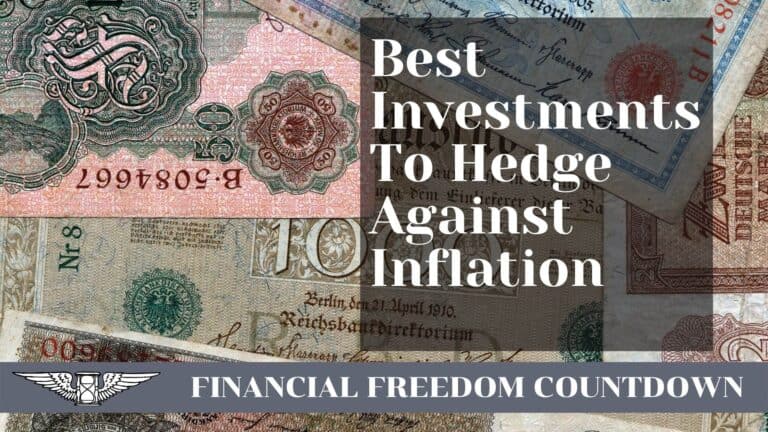




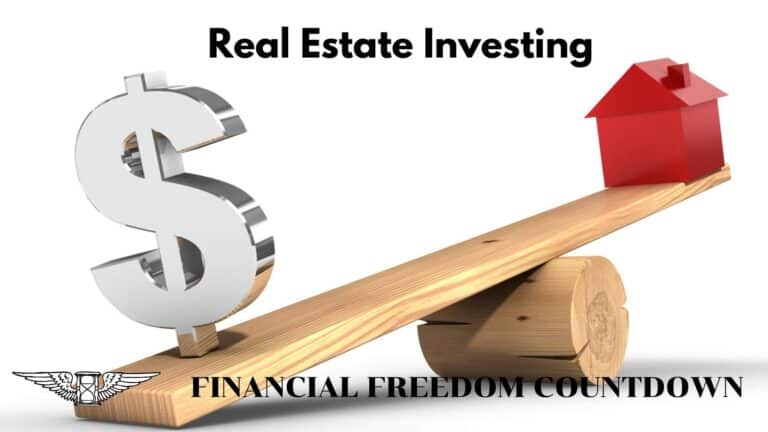
Excellent information, thank you!
Great article
Absolutely helpful with great information.